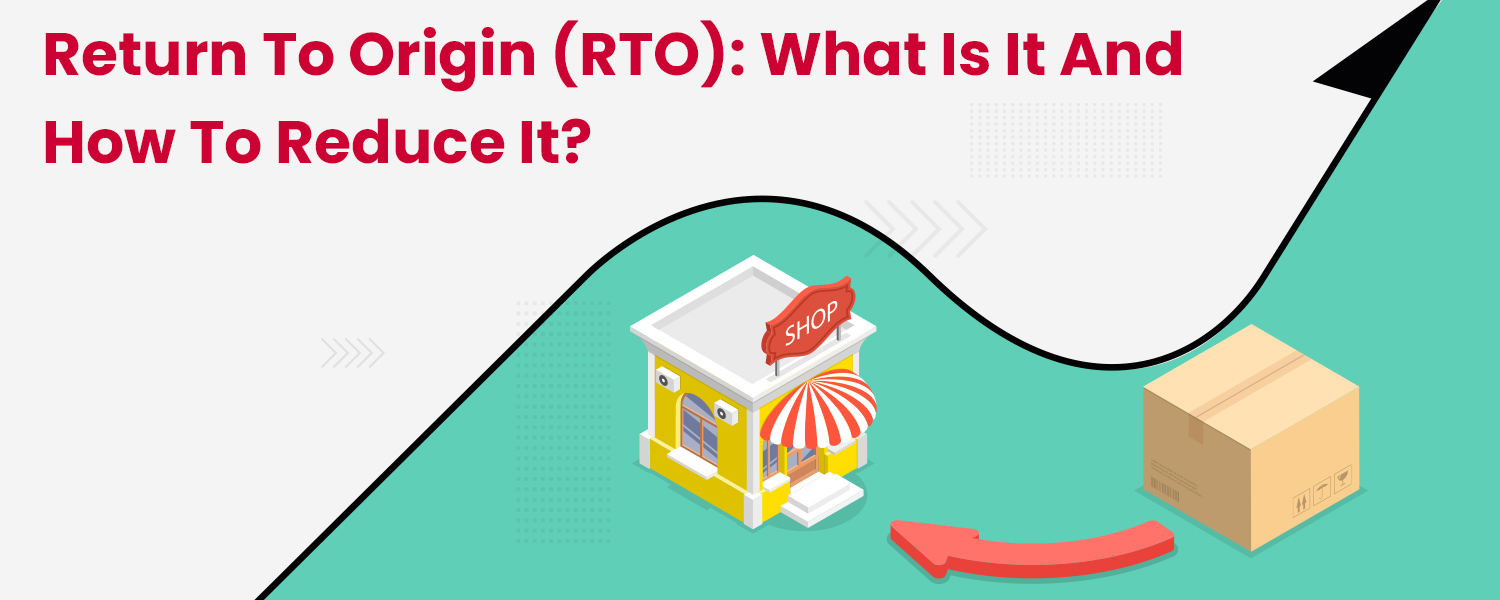The world of eCommerce is quite vast, which largely includes inventory management, logistics, and returns management. Logistics is a crucial part of an eCommerce business that involves several unique industry terms that a new seller might not be aware of. Let’s get a better understanding of such terms, starting with RTO.
What Is RTO?
RTO means Return to Origin, which is a common term in the eCommerce industry that refers to the non-deliverability of an order and its return to the seller’s address. While there can be many reasons for the non-deliverability of a package, sending it back to the warehouse of the seller only adds up to his/her expenses. Therefore, sellers need to keep the RTO as low as possible to scale their business.
Key Reasons For Non-Delivery of Packages
Some of the main reasons for undelivered packages are as follows:
- The customer is not available at the mentioned address to receive the package
- The incorrect delivery address or other relevant information
- The customer denies the delivery of the package
- The door of the home/office/premises is closed
- Reattempt for delivery fails
In case the reason for the non-delivery of the package is the closed door of the customer’s premises, the seller will get the status as “shipment RTO lock”.
How is The RTO Processed Further?
In most cases, the undelivered packages aren’t immediately returned to the seller’s address. At this step, the Non-Delivery Report (NDR) comes in place. An NDR is a receipt that contains the information of orders which could not be delivered and the reason behind it. Once the seller’s courier partner sends him/her the non-delivered status of orders, he/she needs to respond to the raised NDR with “Reattempt” or “Return to Origin”. Depending on the seller’s response, the following courses of action can take place.
- The courier company re-attempts the delivery of the order, usually 3 times at most.
- The courier partner or the seller calls the customer to ask for a suitable delivery time.
- Some courier partners also send a text message or give an IVR call to the customer to understand whether they would want to accept the parcel or decline it.
- In case the customer is not reachable by any mode of communication or declines the order, an RTO is generated.
- At this stage, the order is sent back to the seller’s address.
RTO is further classified into four categories depending on the condition
- Reship the package immediately, and expect a return.
- Reship the package immediately, and don’t expect a return.
- Wait for the return of the package, and reship.
- Wait for the return of the package, and cancel.
Other than the customers’ role in not accepting a parcel, the entire return process depends on the contract between the seller and the courier partner. The shipping charges levied on RTO orders are usually borne by the sellers which means the sellers should partner with a courier company that promises less RTO.
NimbusPost, India’s most trusted shipping aggregator platform helps you reduce your RTO percentage to a minimum. As NimbusPost offers you the flexibility to choose a courier partner from 17+ options, you can compare their delivery durations and opt for a partner that offers the earliest delivery.
How To Reduce The RTO Percentage?
Here are a few tips to keep the RTO percentage from increasing.
- Deliver within Timeline: Ensure that the package is delivered within the promised time or as quickly as possible because delayed deliveries are the most common reason for RTO scenarios.
- Provide Real-Time Tracking Feature: It’s important to provide your customers with real-time order tracking feature so they can check if the product is in the warehouse, in transit, or out for delivery. Major logistics companies like NimbusPost provide this facility to their users to improve the shopping experience of end-customers.
- Receiving a damaged package is a major cause for customers to hit the “return order” button. Whether the damage may have happened in your warehouse, or during the transit due to incorrect placement in the vehicle, it’s going to affect only your pocket.
- If possible, provide your customers with the option to choose a preferred time slot for the delivery. You can also provide an option to reschedule the delivery to bring down the RTO. For example, when the customers know that the order will be delivered today, but they won’t be available at the provided address to receive it, they should be able to raise a reschedule request. In most cases when the customer isn’t available to receive the package, the delivery status is shown as “shipment RTO lock”, and the courier partner sends it back to the seller’s address.
By using NimbusPost’s streamlined shipping solutions, you can bring down the RTO percentage by almost 20%*. Features like the post-shipping real-time tracking and automated NDR management solution prove extremely valuable in your shipping journey.




